#guillaume p
Text
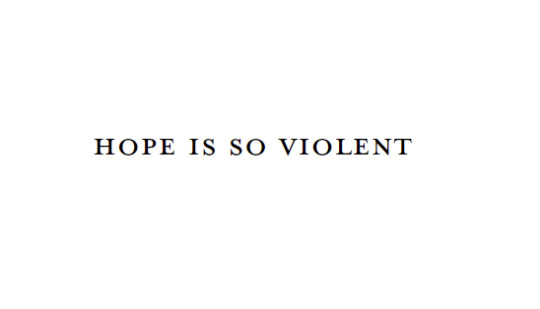
Guillaume Apollinaire, tr. by Anne Hyde Greet, from Calligrammes: "Zone,"
4K notes
·
View notes
Text

Lea Gargiulo by Guillaume Gaubert
- P Magazine, July 2017
66 notes
·
View notes
Text
oh god i just realized rocky used to call seb sunshine. and i was like that is so right rocky. now im thinking of oscar as sunshine too. the cycle truly repeats itself.
25 notes
·
View notes
Text

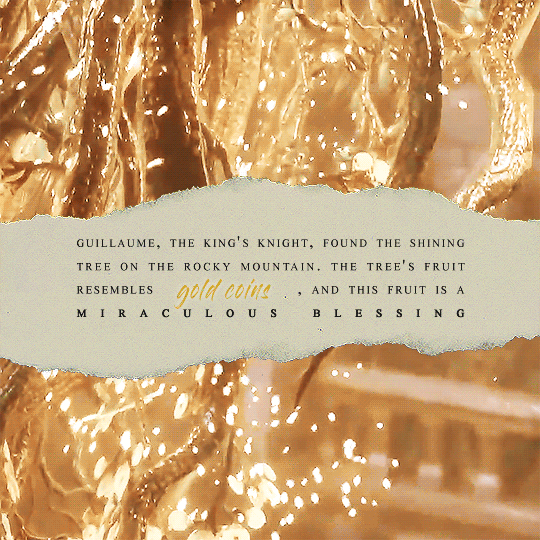

LIES OF P — Guillaume's Ballad
#felt really experimental today#lies of p#lop#lies of p edit#pinocchio#soulslike#gamingedit#dailygaming#videogameedit#gamingnetwork#tw flashing#mine#*lopedit#*gifs
303 notes
·
View notes
Text
Rabbids Invasion early concept art found









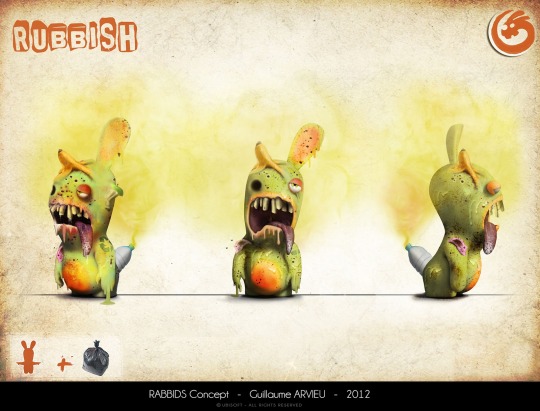


















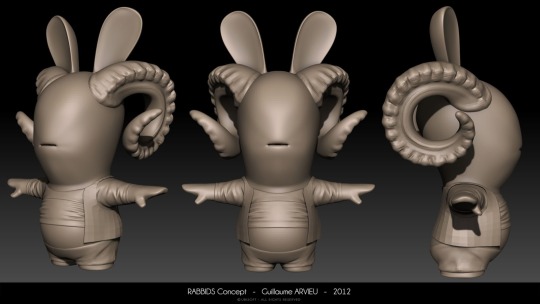
Link to concept art: https://web.archive.org/web/20161030120327/http://guillaume-arvieu.blogspot.be/p/blog-page_5711.html
209 notes
·
View notes
Text
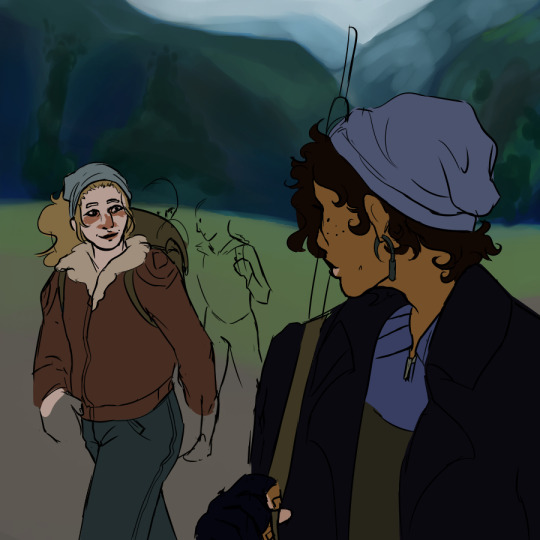
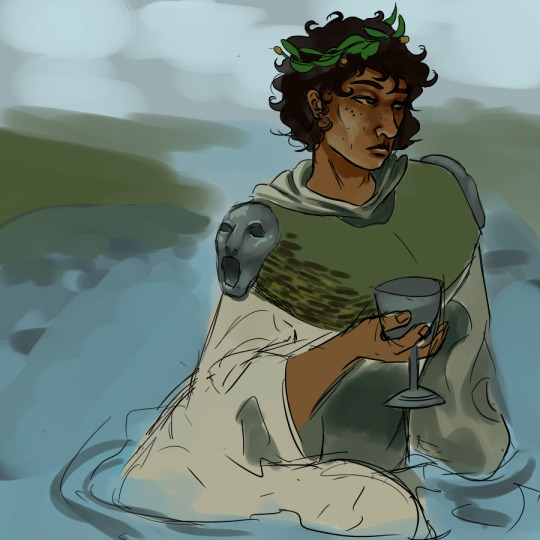
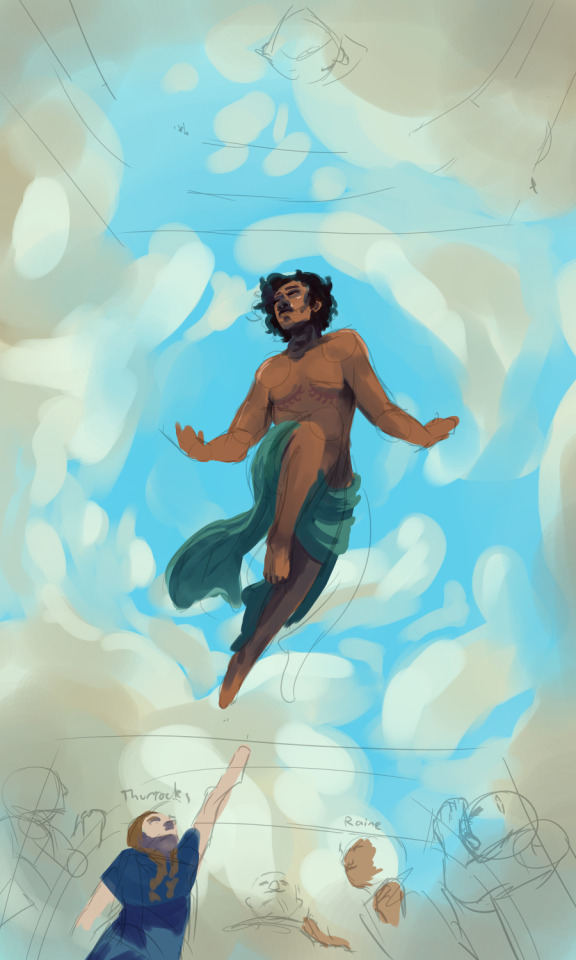
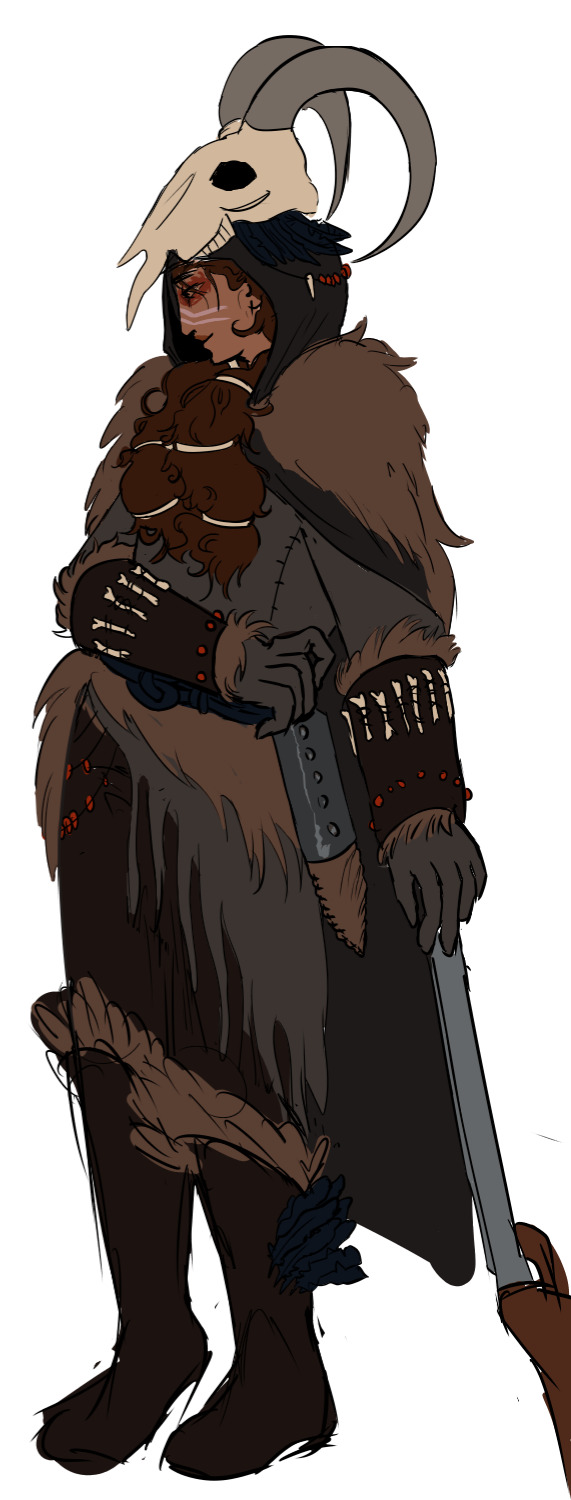


(notes and comments next, tumblr will not let me add a cut no matter how hard i try!!!!!!! killing and maiming!!!!)
silt verses wips, some will get finished and some wont :p which is which?? who knows !!! not me !!!!
1) thurrocks and faulkner on their quest to the endless drear, with jasp, tapper and wallace in the background (or at least thats the idea). most of my time on this one has been spent adjusting values on the hills in the background, and its absolutely too vibrant and green for how i imagine the scene lol theyre also really shitty hills if you look at them for less than a second so. dont do that please LMAO
2) faulkner in his katabasian garb, sat in a river for to maximise his solo slay. this one is kinda old atp but the design hasnt changed much. ive mentioned the open-mouthed epaulettes referencing the mouth delivering/returning before, but the green uhhh idk thing is dried and woven seaweed :) the rest of the robes will be more decorated with abstract woven patterns and embroidery if i ever start working on this one again
3) now THIS is the relgious faulkner that was giving me brain damage a couple days ago, that ive since realized wont be fixed with the ideas a couple people offered because of the perspectice. its pretty obviously mimicking a guillaume dufube sketch intended for a ceiling that i absolutely love. the parts ive produced, im really happy with, but i cant work out the composition fully so its gonna be abandoned at least for a while. not to mention the absolute misplacement of a sky motif. its one of those paintings i wish i had thicker/oil paint or gouache style brushes on medibang for
4) my mercer design!! heavily inspired by paleoart from various sources. everything she and gage have is organic, except a very few, like her sheath (oblong metal with a leather "cap" around the tip of the blade, a real ancient design i found references for on google) and her rifle. the original image also features gage playing their flute while squatting, but both of those things are hard poses to draw and hard to find refereces for, and im not willing to put in THAT much effort god lord i draw for FUN if its hard im giving up baby
5&6) snare dog!!!! i love these silly guys but i dont like this design, its too wolfish and i imagine them sorta borzoi/greyhound aligned. i also dont like the way the face opens, since i imagine that as more of a twist. i do like the flopping tongue though and i liked the half assed rendering
#the silt verses#tsv#brother faulkner#sister thurrocks#mercer and gage#tsv mercer#tsv faulkner#tsv thurrocks#art#my art#wips#wip#digital art#digital wip#character design#character designs#guillaume dubufe#digital painting#religious art#religious imagery#talking about my art#talking about art#nonsexual nudity#tsv snare dog#snare dogs#medibang#medibang paint#siltposting#my artwork#the silt verses fanart
92 notes
·
View notes
Text
new oc!!!! Meet Odilia Elodie Lucinenne Abreo
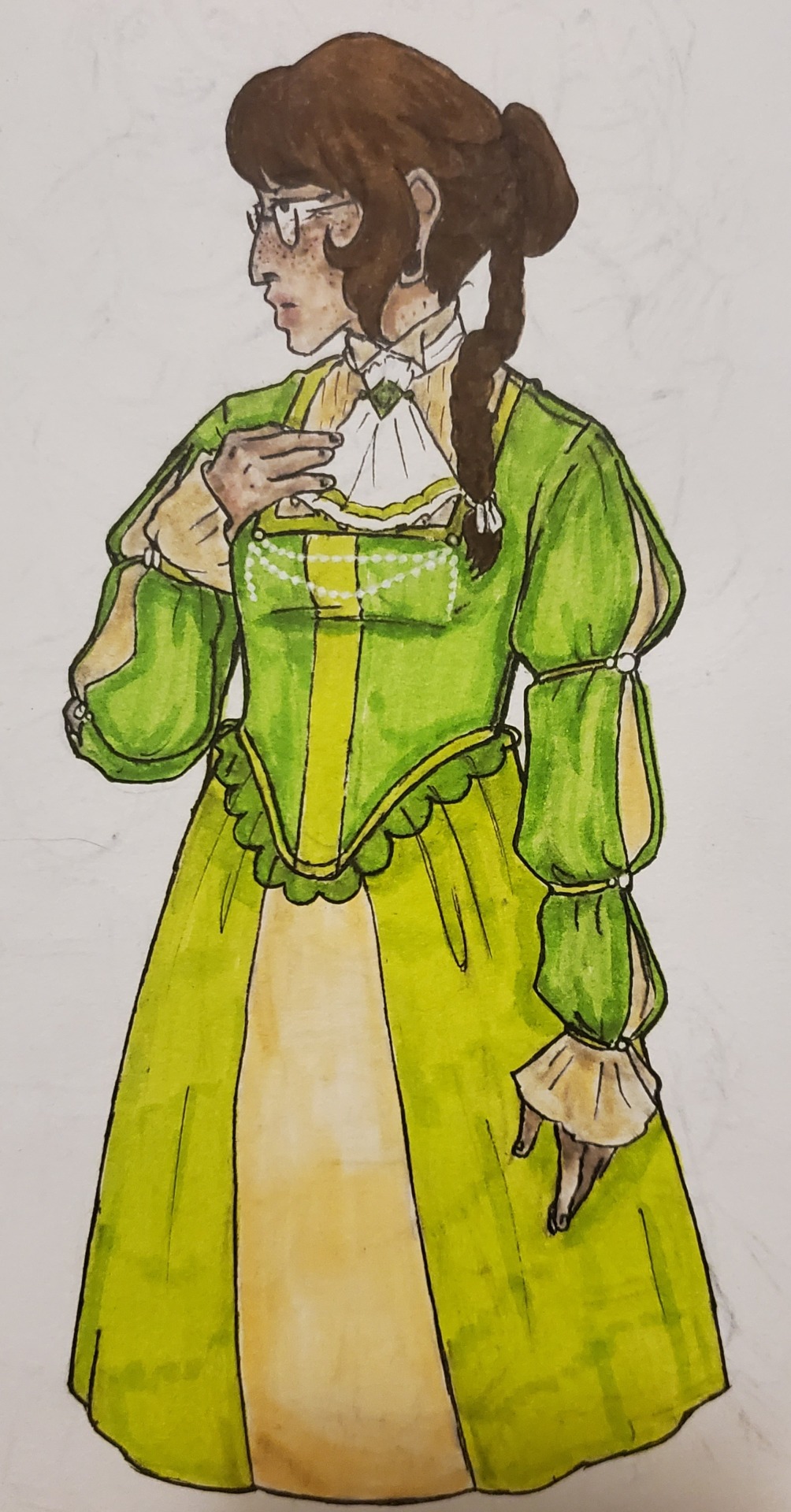
Info on her down here (still a w.i.p will be updated as i go(im lazy ok and over excited to show her off even if shes underdeveloped))
Pairing: Leon (might change)
Age: 30
Backstory(kinda): Odilia is the youngest of 4, daughter of to earl Guillaume Abreo, having grown up in a loving household she was lucky enough to have an identical education as her brothers quickly excelling in math, science and gaining a huge fascination for astronomy, a field which was rather under developed in rhodolite. While yes her education was identical to her brothers, being a lady meant along with her tutor she had a governess teaching her of the more lady like things, the extra hours of learning were exhausting but she gained a love for the arts, and learned how to paint as well. At a young age she had managed to succour a position in an academy in the capital, her family residing closer to the border with bentonite, moving to the capital expecting only to stay for a few years, before moving back home to be married so she throw herself into her studies, she viewed these as her only years of freedome not being pressured to marry or debut in society, at the academy she started learning more literature and philosophy but her passions still lied in math and astronomy, she was surprised when she was given the opportunity to continue her studies in astronomy in rhodolites palace, she quickly accepted this opportunity thinking it would never happen again and seeing this as a way out of any possible arranged marriages. Living in the palace meant access to the library a place where she'd like to spend most of her time, but having only ever heard rumors of prince Chevalier she wasnt particularly enthusiastic to bump into him, but living in the palace makes it impossible to fully avoid the princes's. Even though she came to the palace for an education and an opportunity to start her research she quite enjoys the balls and social evwnts happening st the palace, realising that being a lady of science doesnt mean giving up being a lady of status as well, she will put her status of being a lady above her status of being a scholar, that doesnt mean she takes being a scholar any less seriously infact she takes it much more seriously for that reason, she needs to work less to be seen as a lady as she does a scholar.
Her relationship with leon: i honestly have no idea how they'd get together or why, i need to finish Leon's route :P
personality: shes a very headstrong, determind and confident woman, shes focused and goal oriented, curious and quite hardworking. she's social but not overly talkative, polite, perceptive and opinionated.
-More will be added soon-
@olivermorningstar @solacedeer @m-mmiy @keithsandwich @lorei-writes
Because i feel like you guys would wanna be tagged
#ikepri#ikemen fanart#Ikepri oc#Ikepri odilia#ikemen prince#Honestly i should of probably waited to writw more before postinf about her#I just got really really excited :P#ikemen oc#And pairing her with leon is kinda somwthing i did on a whim#I could just not pair her with someone sure#But i wanna#My oc i decide who she kisses#And like i said#Need to finish leons route before i fully decide if i want her to he with leon#Cause my perception of him is kinda flat#Uhm some people wanted to be tagged in this right?#Uhhh#Ok lemme remember who :^#Also yes her name is a mouth full#No im not sorry#I fucking love giving ocs middle names#Middle names can be great for silly little things#Sorry its a bit short#Im bad at making character profiles#I made most of this up as i was writing
28 notes
·
View notes
Text
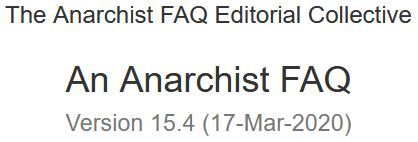
A.3.8 What is “anarchism without adjectives”?
In the words of historian George Richard Esenwein, “anarchism without adjectives” in its broadest sense “referred to an unhyphenated form of anarchism, that is, a doctrine without any qualifying labels such as communist, collectivist, mutualist, or individualist. For others, … [it] was simply understood as an attitude that tolerated the coexistence of different anarchist schools.” [Anarchist Ideology and the Working Class Movement in Spain, 1868–1898, p. 135]
The originator of the expression was Cuban born Fernando Tarrida del Marmol who used it in November, 1889, in Barcelona. He directed his comments towards the communist and collectivist anarchists in Spain who at the time were having an intense debate over the merits of their two theories. “Anarchism without adjectives” was an attempt to show greater tolerance between anarchist tendencies and to be clear that anarchists should not impose a preconceived economic plan on anyone — even in theory. Thus the economic preferences of anarchists should be of “secondary importance” to abolishing capitalism and the state, with free experimentation the one rule of a free society.
Thus the theoretical perspective known as “anarquismo sin adjetives” (“anarchism without adjectives”) was one of the by-products of a intense debate within the movement itself. The roots of the argument can be found in the development of Communist Anarchism after Bakunin’s death in 1876. While not entirely dissimilar to Collectivist Anarchism (as can be seen from James Guillaume’s famous work “On Building the New Social Order” within Bakunin on Anarchism, the collectivists did see their economic system evolving into free communism), Communist Anarchists developed, deepened and enriched Bakunin’s work just as Bakunin had developed, deepened and enriched Proudhon’s. Communist Anarchism was associated with such anarchists as Elisee Reclus, Carlo Cafiero, Errico Malatesta and (most famously) Peter Kropotkin.
Quickly Communist-Anarchist ideas replaced Collectivist Anarchism as the main anarchist tendency in Europe, except in Spain. Here the major issue was not the question of communism (although for Ricardo Mella this played a part) but a question of the modification of strategy and tactics implied by Communist Anarchism. At this time (the 1880s), the Communist Anarchists stressed local (pure) cells of anarchist militants, generally opposed trade unionism (although Kropotkin was not one of these as he saw the importance of militant workers organisations) as well as being somewhat anti-organisation as well. Unsurprisingly, such a change in strategy and tactics came in for a lot of discussion from the Spanish Collectivists who strongly supported working class organisation and struggle.
This conflict soon spread outside of Spain and the discussion found its way into the pages of La Revolte in Paris. This provoked many anarchists to agree with Malatesta’s argument that ”[i]t is not right for us, to say the least, to fall into strife over mere hypotheses.” [quoted by Max Nettlau, A Short History of Anarchism, pp. 198–9] Over time, most anarchists agreed (to use Nettlau’s words) that “we cannot foresee the economic development of the future” [Op. Cit., p. 201] and so started to stress what they had in common (opposition to capitalism and the state) rather than the different visions of how a free society would operate. As time progressed, most Communist-Anarchists saw that ignoring the labour movement ensured that their ideas did not reach the working class while most Collectivist-Anarchists stressed their commitment to communist ideals and their arrival sooner, rather than later, after a revolution. Thus both groups of anarchists could work together as there was “no reason for splitting up into small schools, in our eagerness to overemphasise certain features, subject to variation in time and place, of the society of the future, which is too remote from us to permit us to envision all its adjustments and possible combinations.” Moreover, in a free society “the methods and the individual forms of association and agreements, or the organisation of labour and of social life, will not be uniform and we cannot, at this moment, make and forecasts or determinations concerning them.” [Malatesta, quoted by Nettlau, Op. Cit., p. 173]
Thus, Malatesta continued, ”[e]ven the question as between anarchist-collectivism and anarchist-communism is a matter of qualification, of method and agreement” as the key is that, no matter the system, “a new moral conscience will come into being, which will make the wage system repugnant to men [and women] just as legal slavery and compulsion are now repugnant to them.” If this happens then, “whatever the specific forms of society may turn out to be, the basis of social organisation will be communist.” As long as we “hold to fundamental principles and … do our utmost to instil them in the masses” we need not “quarrel over mere words or trifles but give post-revolutionary society a direction towards justice, equality and liberty.” [quoted by Nettlau, Op. Cit., p. 173 and p. 174]
Similarly, in the United States there was also an intense debate at the same time between Individualist and Communist anarchists. There Benjamin Tucker was arguing that Communist-Anarchists were not anarchists while John Most was saying similar things about Tucker’s ideas. Just as people like Mella and Tarrida put forward the idea of tolerance between anarchist groups, so anarchists like Voltairine de Cleyre “came to label herself simply ‘Anarchist,’ and called like Malatesta for an ‘Anarchism without Adjectives,’ since in the absence of government many different experiments would probably be tried in various localities in order to determine the most appropriate form.” [Peter Marshall, Demanding the Impossible, p. 393] In her own words, a whole range of economic systems would be “advantageously tried in different localities. I would see the instincts and habits of the people express themselves in a free choice in every community; and I am sure that distinct environments would call out distinct adaptations.” [“Anarchism”, Exquisite Rebel, p. 79] Consequently, individualist and communist anarchist “forms of society, as well as many intermediations, would, in the absence of government, be tried in various localities, according to the instincts and material condition of the people … Liberty and experiment alone can determine the best forms of society. Therefore I no longer label myself otherwise than ‘Anarchist’ simply.” [“The Making of An Anarchist”, The Voltairine de Cleyre Reader, pp. 107–8]
These debates had a lasting impact on the anarchist movement, with such noted anarchists as de Cleyre, Malatesta, Nettlau and Reclus adopting the tolerant perspective embodied in the expression “anarchism without adjectives” (see Nettlau’s A Short History of Anarchism, pages 195 to 201 for an excellent summary of this). It is also, we add, the dominant position within the anarchist movement today with most anarchists recognising the right of other tendencies to the name “anarchist” while, obviously, having their own preferences for specific types of anarchist theory and their own arguments why other types are flawed. However, we must stress that the different forms of anarchism (communism, syndicalism, religious etc) are not mutually exclusive and you do not have to support one and hate the others. This tolerance is reflected in the expression “anarchism without adjectives.”
One last point, some “anarcho”-capitalists have attempted to use the tolerance associated with “anarchism without adjectives” to argue that their ideology should be accepted as part of the anarchist movement. After all, they argue, anarchism is just about getting rid of the state, economics is of secondary importance. However, such a use of “anarchism without adjectives” is bogus as it was commonly agreed at the time that the types of economics that were being discussed were anti-capitalist (i.e. socialistic). For Malatesta, for example, there were “anarchists who foresee and propose other solution, other future forms of social organisation” than communist anarchism, but they “desire, just as we do, to destroy political power and private property.” “Let us do away,” he argued, “with all exclusivism of schools of thinking” and let us “come to an understanding on ways and means, and go forwards.” [quoted by Nettlau, Op. Cit., p. 175] In other words, it was agreed that capitalism had to be abolished along with the state and once this was the case free experimentation would develop. Thus the struggle against the state was just one part of a wider struggle to end oppression and exploitation and could not be isolated from these wider aims. As “anarcho”-capitalists do not seek the abolition of capitalism along with the state they are not anarchists and so “anarchism without adjectives” does not apply to the so-called “anarchist” capitalists (see section F on why “anarcho”-capitalism is not anarchist).
This is not to say that after a revolution “anarcho”-capitalist communities would not exist. Far from it. If a group of people wanted to form such a system then they could, just as we would expect a community which supported state socialism or theocracy to live under that regime. Such enclaves of hierarchy would exist simply because it is unlikely that everyone on the planet, or even in a given geographical area, will become anarchists all at the same time. The key thing to remember is that no such system would be anarchist and, consequently, is not “anarchism without adjectives.”
#faq#anarchy faq#revolution#anarchism#daily posts#communism#anti capitalist#anti capitalism#late stage capitalism#organization#grassroots#grass roots#anarchists#libraries#leftism#social issues#economy#economics#climate change#climate crisis#climate#ecology#anarchy works#environmentalism#environment#solarpunk#anti colonialism#mutual aid#cops#police
22 notes
·
View notes
Text

The other woman
Yuma has spent more time with kurumi than Shinigami, which makes her mad since he wasn't paying attention to her, but she felt lonely like she was just gone not in Yuma sight anymore, it was after yuma slove a little side mission that one of the kanai ward people had. Shinigami had enough of the loneliness and the Neglect "master..." she said in a serious way, which Yuma hadn't heard of "yes Shinigami?" He said to her when they were the only people in the Submarine. "...do you like kurumi?" She said in Hesitant but sad tone that Yuma didn't even know that she could feel sad."Wait!? No! Of course not she just a friend". Yuma knows there was no point in lying to Shinigami since she can listen to his thoughts. "You don't have to lie... Master," she said under her breath as she floated next to the couch where Yuma was sitting."I'm sorry...shinigami," Yuma said, knowing there was nothing he could do to calm her.
It was awkward. Investigation, but at least fubuki was there to uh...just helping out how she can after getting frame for Terrorist and murder (chapter 3) fubuki, kurumi and yuma are Cornered by the peacekeepers ( guillaume and Dominic too) shinigami decide to save yuma (once again) by opening the mystery labyrinth portal before kicking yuma and fubuki in before jumping in herself after yuma explain what the mystery labyrinth is fubuki already run into the mystery labyrinth before yuma could go get her shinigami place her hand on his shoulder "master..." She tightened her grab "p-please...don't leave me.." she said under her breath. Was she crying? Her hands were shaking, and her body yuma turned around, and he was right she was crying. "shinig-?" He couldn't finish his Sentence before she hugged him tightly."M-Master, don't leave me. Please don't leave me alone. I do anything I stop talking about you if it's enough to please you!" Yuma couldn't feel anything but guilt how he been treating her these days. Yuma hugs her back. "I promise shinigami I won't leave you...I stay with you until the end." Shinigami, stop crying and looking up to you ,"really?" She wips her tears."Yes," he said with a soft smile, which Shinigami replied with a soft smile too before holding his shoulders blushing. "I have a question master". Yuma tilt his head, little as she came closer "yes Shinigami?" Shinigami, look at the side of him before whispering "d-do you love me master?" Yuma blushed at her question but softly nodded,"Of course I do. "Shinigami cry of joy before kissing yuma,"me too master, " she said before pulling away from the kiss with a teasing smile."Now let go solve this case!" Yuma nodded before following Shinigami into the mystery labyrinth.

15 notes
·
View notes
Text
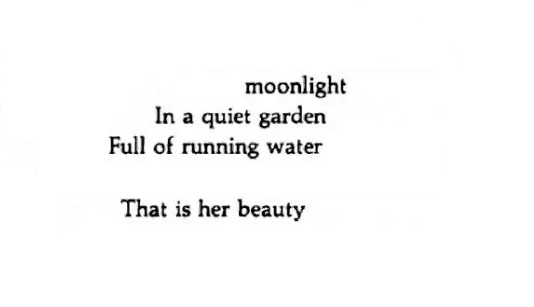
Guillaume Apollinaire, tr. by Anne Hyde Greet, from Calligrammes: "The Sighs of the Gunner from Dakar,"
1K notes
·
View notes
Text

Lea Gargiulo by Guillaume Gaubert
- P Magazine, July 2017
47 notes
·
View notes
Text
"My compliments to all the family except for Lott[e]."

Charlotte Philiberthe von Nassau-Beverweerd (1649-1702) (detail); created between 1675 and 1694, though the hairstyle would suggest a date in the 1670s; in the collection of the Rijksmuseum.
For Valentine's day, here's a tale of a romance that did not quite turn out as expected, but left a string of interesting documents.
Let's picture the scene: you're in love. Who do you tell? Well, obviously, you might confide the butterflies in your belly to your best friend, and it just so happens that the lady who's quite turned your head is a distant cousin of his.
This is the situation one Hans Willem Bentinck (1649-1709) found himself in during January and February 1675. His crush was Charlotte Philiberthe von Nassau-Beverweerd, a distant relation (their grandfathers were half-brothers) of his closest friend, then-Stadtholder of the United Provinces and future King of England William III (1650-1702).

William III of Orange and Hans Willem Bentinck; dated to 1676. Collection of Stichting Kasteel Amerongen, via RKD Research.
William interceded on his best friend's behalf, and seems to have taken "Lotte", as he called her, aside when the latter, living with one of her sisters who had married an English noble, paid a visit to the Netherlands.
The Stadtholder, who was friends with Lotte as she was one of the few people who would engage him in some good, old-fashioned banter and, her love for a good joke aside, was an extremely intelligent conversationalist, made her promise to give a reply as to what he should tell his best friend; but that reply never came and so, William, writing to Lotte's brother-in-law, Thomas Butler, the 6th Earl of Ossory (1634-1680), with whom she lived, added a few P.S.-s to his usual (largely political) letters to Ossory:
In late January or early February, William wrote to Ossory:

(P. S.) I beg of you to tell Lott[e] that, all her cruelty aside, I love her with all my heart, and to reproach her that she has neither written, nor even replied to my letter, as she had promised when we parted. I also hope that she will soon declare herself on that which she had promised me to think on when we parted, for Bentinck is very impatient to know how he stands, which seems very reasonable to me.
G.*
(* In case you're wondering why William, or Willem in Dutch, signed as "G.", in his private correspondence: it's the abbreviation of the French equivalent of his name, Guillaume.)
However, it looks like Lotte was still ghosting both Bentinck and William, because he signed another letter to Ossory, datable to February 1675, off as follows:
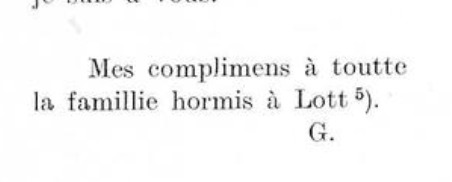
My compliments to all the family except for Lott[e].
G.
A third letter to Ossory lastly mentions Lotte in March 1675:

(P. S.) I beg of you to assure Madame the Countess [of Ossory] of my very humble services, and [Lotte] as well, regardless of my not having any reason to be pleased with her.
G.
One imagines that William may have taken his best friend aside and told him to forget about Lotte. Sadly, we have no information on how Lotte reacted to these messages.
If there is anything to be taken from this tale of historical heartbreak, it is that this sort of thing happens. If this Valentine's Day you find yourself unhappy because you're celebrating it alone and rather would not to, remember that you're not alone. Maybe also talk to your best friend, even if they're not a powerful noble in charge of a country.
Oh, and don't be a Lotte and ghost someone with an (romantic) interest in you. Just tell them in polite, but no uncertain terms that you're not into them.
From a historian's perspective, I find it fascinating how the Lotte-letters to Ossory highlight a part of William III's personality that is largely overlooked; posthumously often regarded as a guarded, almost robotically emotionless man, the young William in his early 20s who tries to play cupid for his best friend and adopts a very domestic tone in his missives going so far as to utilise nicknames paints a rather different picture.
Lotte was evidently forgiven, because she became a member of William and Mary's court, and briefly served under Anne as well. She never married, and her motives for doing so have been lost to history.
As for Hans Willem Bentinck, he met a woman called Anne Villiers (1651-1688) two and a half years later: she was, her mother having been the governess of William's bride Princess Mary, the future Mary II, a sort of sisterly figure to the Princess, and the two met through the marriage of their friends/employers. Contrary to William and Mary, for whom love only developed gradually in the aftermath of a fairly traumatic arranged marriage (especially on the then-15-year-old Mary's part), for Anne and Hans Willem Bentinck, their romance was much more organic: they fell in love at their workplace, so to say. To crown their personal happy end, William III stepped in to provide Anne, who was of a respectable family, yet had no fortune to speak of, with a dowry.
For the letters from William to Ossory, see: Japikse, Nicolaas [ed.]: Correspondentie van Willem III en van Hans Willem Bentinck (1927-1935), Vol. II, ii, letters 4, 15 and 16.
#valentines day#history#17th century#william of orange#william iii#hans willem bentinck#charlotte von nassau beverweerd#dutch history
19 notes
·
View notes
Text



The Little Beggar, c. 1808-09, Napoleonic era
By Hortense Haudebourt-Lescot, French
The Little Beggar is one of the earliest known works by the artist, who arrived in Rome a few months after her professor, Guillaume Guillon-Lethière, had been appointed director of the Academy of France in its new home in the Villa Medici. The subject is exceptional in showing a beggar in such a compassionate light; while he is clearly asking the viewer for money, he is a sympathetic, not a threatening figure, reflecting a significant change of attitude towards the less fortunate.
Literature
François Guizot, De l’état des Beaux-Arts en France et du Salon de 1810, Paris, Maradan, 1810, p. 99
Pierre François Gueffier, Entretiens sur les ouvrages de peinture, sculpture et gravure, exposés au Musée Napoléon en 1810, Paris, Gueffier jeune, 1811, p. 157
C. P. Landon, Salon de 1810, p.104
Paul Menoux, Hortense Haudebourt-Lescot, Catalogue Raisonné, Paris, Arthena (to be published).
TEFAF Maastricht
#Hortense Haudebourt-Lescot#Le Petit Mendiant#TEFAF Maastricht#TEFAF#maastricht#19th century#napoleonic era#napoleonic#art#women artists#neoclassical#1808#1809#19th century art#female artists#female painters#women in art#auction#auctions
19 notes
·
View notes
Note
Six months ago I was certain Papadakis/Cizeron were coming back. Why wouldn’t they? They were on the Montreal training schedule according to FSU, they didn’t get a real ‘moment’ from the COVID Olympics, they looked in shape, and they could steamroll the current competition. But the way Gabi’s been talking recently it sounds like they’ve decided against it? I might be wrong. But I think that’s really brave, to prioritise mental health over the opportunities that would come from another gold medal. Tessa wouldn’t have had half her post-skating experiences had they not come back to win again. It’s a lot to give up!
Romain said a while back that Gabi and Guillaume couldn't agree to terms, whatever that means. after living regular life for a while, going back to full time training and the sacrifices it takes to win an Olympics must take a level of commitment that’s hard to conceive - VM said you have to be fully in it, that you can't do it for another person, that you have to want it for yourself - maybe one or both Gabi and Gui don't want it enough to go through that again. they're already OGMs regardless
they don't seem like they'd be motivated by getting Buick ads or having their picture in supermarket aisles. what else does Tessa have that Gabi and Gui can't have without a second medal? they can go back to school if they want, like she did
right now, it doesn't seem like they're coming back, but it's still early - tour season for the top teams hasn't ended yet, so some of them aren't yet training for next season. P/C could even skip GP season, just go to their Nationals and skate the second half of the season. selfishly, i'd love to see them in competitive mode live. but i think jumping back on a moving train is harder once you've gotten off of it. i guess we'll see
7 notes
·
View notes
Text

Eleanor Fortescue-Brickdale - The Gift That Is Better Than Rubies (1899) :: [Guillaume Gris]
* * * *
Night Surrender to Praise at Dawn – Nov. 16, 2021
“In the middle of the night I hold hands with trust and surrender to the One who sees without a light… My prayer travels deep into my soul space, into the essence of my being.
Rising from sleep, I raise high the chalice of my life. Dressed in robes of joyful anticipation, I enter this day with an open heart. This is the awakening hour. This is the hour of praise. ‘O medicine of dawn; O healing drink of morning!’ Offering both words and silence, I join in the dance of creation.”
–Macrina Wiederkehr, Seven Sacred Pauses: Living Mindfully Through the Hours of the Day, p. 29 and 47
For a long time, a period of many months, I would suddenly come awake at 3 a.m. Instead of tossing and turning, I would get up and go to the living room. I wouldn't turn on any lights, I'd just sit and look out the window. I wouldn't try to meditate of pray or do or think anything in particular. I'd just sit and look and let time pass. Sometimes I would feel certain feelings arise that would be like a storm, like a prayer, like driving at night through a human-free landscape. These feelings and sensations would pass and I would just let them pass through me without feeling like I had to think about them or analyze them or make a meaning about them. They would rise and fall, come and go - and finally I would know that I could now go back to bed and sleep. I was kind of sad when these episodes ended. It was as though I was a party to a secret and then it was over.
[quidnunc :: "The World Wants To Know"]
#Macrina Wiederkehr#quotes#night surrender#quidnunc#The World Wants To Know#Eleanor Fortescue-Brickdale#prayer#mediatation
5 notes
·
View notes
